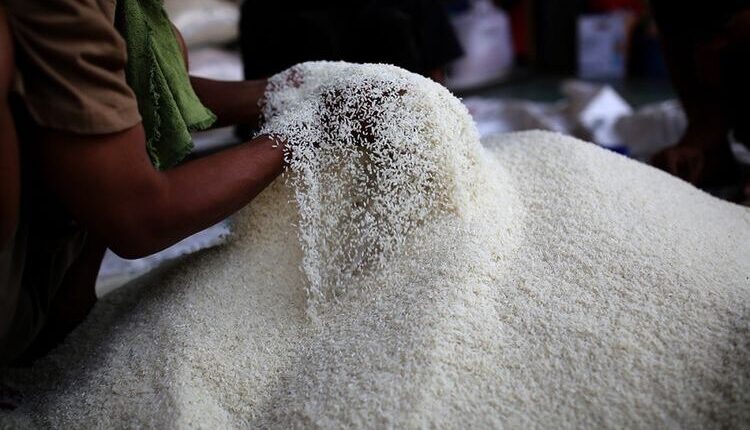Appreciating the Government’s Effective Strategy to Prevent Increases in Rice Prices
The government continues to strive to reduce the current high price of rice. One of the Government’s efforts to reduce prices is by pouring rice from the Bulog warehouse into rice mills. Different from the previous method of throwing rice to rice traders, this time the Government, especially President Jokowi, wants the Bulog rice to be poured into rice mills.
This step aims to reduce the high price of rice and is expected to minimize the shutdown of rice mills caused by the high price of grain and fairly limited rice stocks.
The rice stock from the Bulog Warehouse is 200 thousand tons which will be disbursed directly to rice mills nationally. The government hopes that in this way the price of rice will continue to decline.
Based on the food price panel managed by the National Food Agency (Bapanas), the price of medium rice on the market again reflects increasingly conducive conditions. On October 23 2023, the price of medium rice was recorded at IDR 13,190/kg. This indicates a decrease of 30 points compared to the price of similar rice on October 1 2023 which was at IDR 13,220/kg.
Furthermore, developments in the price of IR-III medium rice at the Cipinang Rice Main Market (PIBC) continued to record depreciation. It was observed that on October 20 2023, the price of rice at the Cipinang Rice Main Market was IDR 10,996/kg. This price has of course experienced a gradual decrease compared to October 1 2023, which was at IDR 11,331/kg.
Acting Minister of Agriculture, Arief Prasetyo Adi, said that pouring rice from the Bulog Warehouse to rice mills was the Government’s strategy to accelerate price stabilization and help distribute rice as quickly as possible to the public.
This step is the best solution for all parties. Because, rice millers will still be able to get income from the rice repacking process, the Government has succeeded in stabilizing rice prices, and the public can also get premium rice at affordable prices.
Previously, Bulog had prepared around 200,000 tons of rice to be distributed to rice millers throughout Indonesia. Arief Prasetyo Adi also ensured that the availability of rice stocks would be sufficient during the upcoming 2024 elections by flooding the market with SPHP rice from Perum Bulog, including to rice mills, which is the Government’s quickest step in reducing rice prices. His party has prepared Bulog’s rice stock of 1.4 million to 1.5 million tons so that the community will not lack rice stock reserves.
Apart from pouring rice into rice mills, President Joko Widodo said that the Government would issue El Nino Direct Cash Assistance (BLT). According to him, this assistance will be transferred to the accounts of people who are BLT recipients in November and December 2023. The BLT amount is estimated at IDR 200,000/month each.
It is hoped that the Government’s BLT program will not reduce people’s purchasing power due to the El Nino disaster that hit a number of regions in Indonesia where the disaster resulted in many farmers failing to harvest. In this way, it is hoped that BLT El Nino can reduce the burden on the community’s economy.
Regarding the El Nino BLT program, the Ministry of Finance (Kemenkeu) has prepared a budget of IDR 7.52 trillion to be distributed to 21.3 million Beneficiary Families (KPM). These beneficiaries have of course been registered with the Ministry of Social Affairs (Kemensos) so that the distribution of BLT is right on target.
Minister of Finance, Sri Mulyani said that the 10 kg rice aid handed over to 21.3 million KPM would be supplemented with El Nino BLT for two months, namely November and December 2023. Sri Mulyani also hopes that the Minister of Social Affairs, Tri Rismaharini, can implement the Direct Cash Assistance very well in accordance with the KPM data that has been recorded at the Ministry of Social Affairs.
As is known, previously the Government had intensified stage 2 social rice assistance of 10 kg to lower middle class communities sourced from the Government Rice Reserve (CBP) which was managed by Perum Bulog. The government ensures that the process of distributing rice social assistance continues in an orderly manner and follows the established regulations.
It is hoped that the distribution of rice food reserves from the Government can be mobilized quickly and for consumption purposes as well as dealing with emergencies and anticipating unexpected price fluctuations. The Central Government’s policy regarding the distribution of rice food reserves is currently considered very appropriate because it can reduce the burden on lower classes of society.
Meanwhile, as an effort to maintain the momentum of economic recovery and maintain people’s purchasing power, the Government recently stated that the distribution of 10 kg of rice aid will be extended until 2024. Of course, this is a good opportunity for the Indonesian people to experience the rice social assistance facilities from the Government.
It is hoped that the various strategies implemented by the Government can help people in need so that they can avoid rice price spikes and ease their economy. Even in distributing BLT, the Government continues to prioritize KPM targets in this assistance so that it can be distributed appropriately. Thus, the public does not need to worry about rising rice prices because the Government will continue to try various ways to stabilize rice prices and maintain people’s purchasing power.
